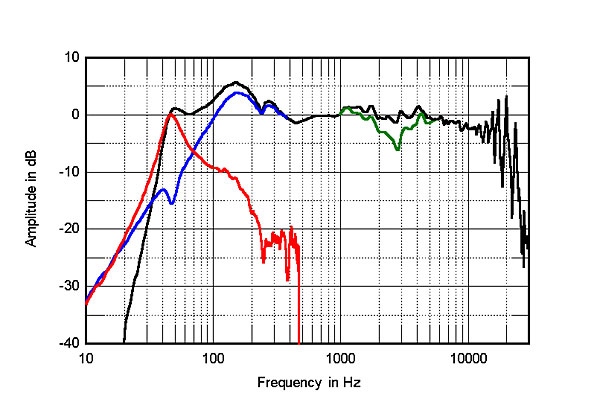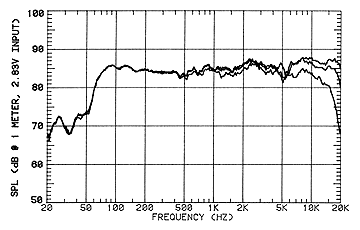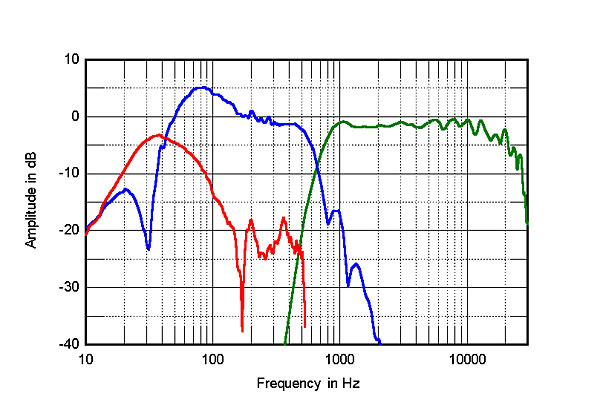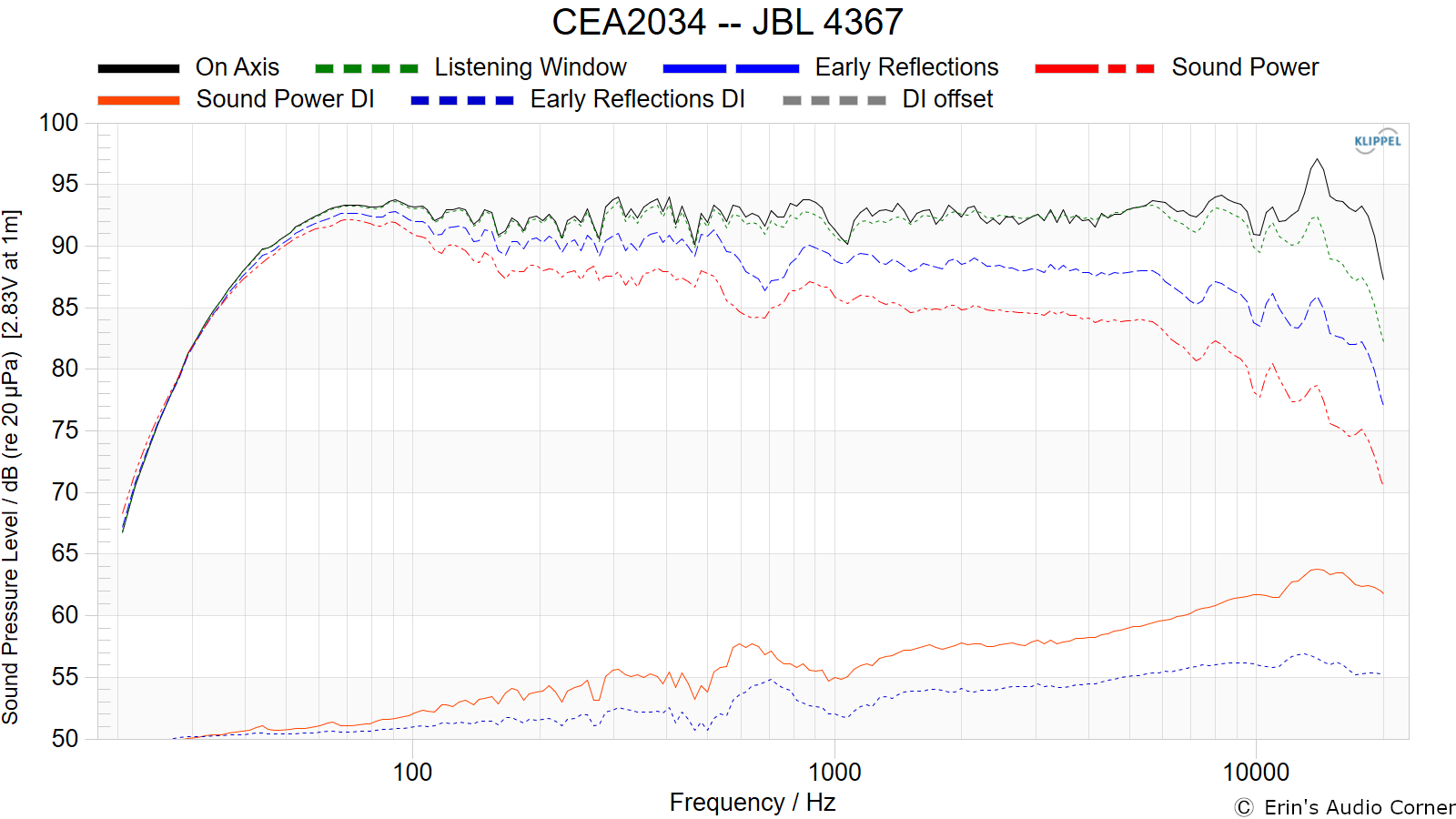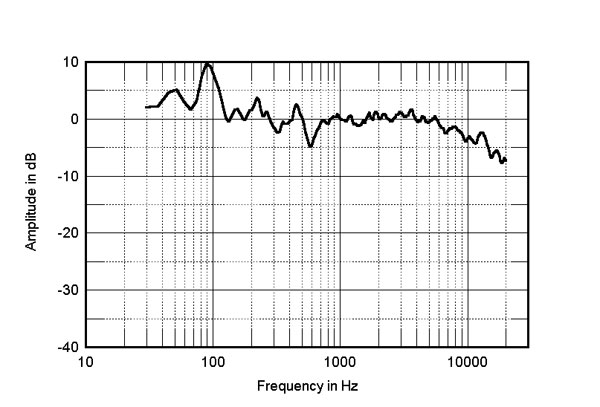Presume typo and you mean JBL 4367. Perfect, thanks.
Stereophile measurement using nearfield woofer technique
Per JA:
Same
JBL measured with a Klippel, NOT using nearfield woofer technique:
The "hump" has evaporated

.
It is an "artifact" of the measurement method. JA doesn't/can't measure LF anechoically to get an accurate measurement, so he uses the correct alternate technique....which obviously leads to confusion unless one has read his measurements method article, buried somewhere on Stereophile. He does, as I quoted above, note it with each review.
Once again, no 'hump' is inherent to passive speakers. Just individual design. Not defending them, as this type of 19th century tech is one of many reasons why I came off the sideline and started rolling my own. Just wanted to set the record straight.
cheers,
AJ

